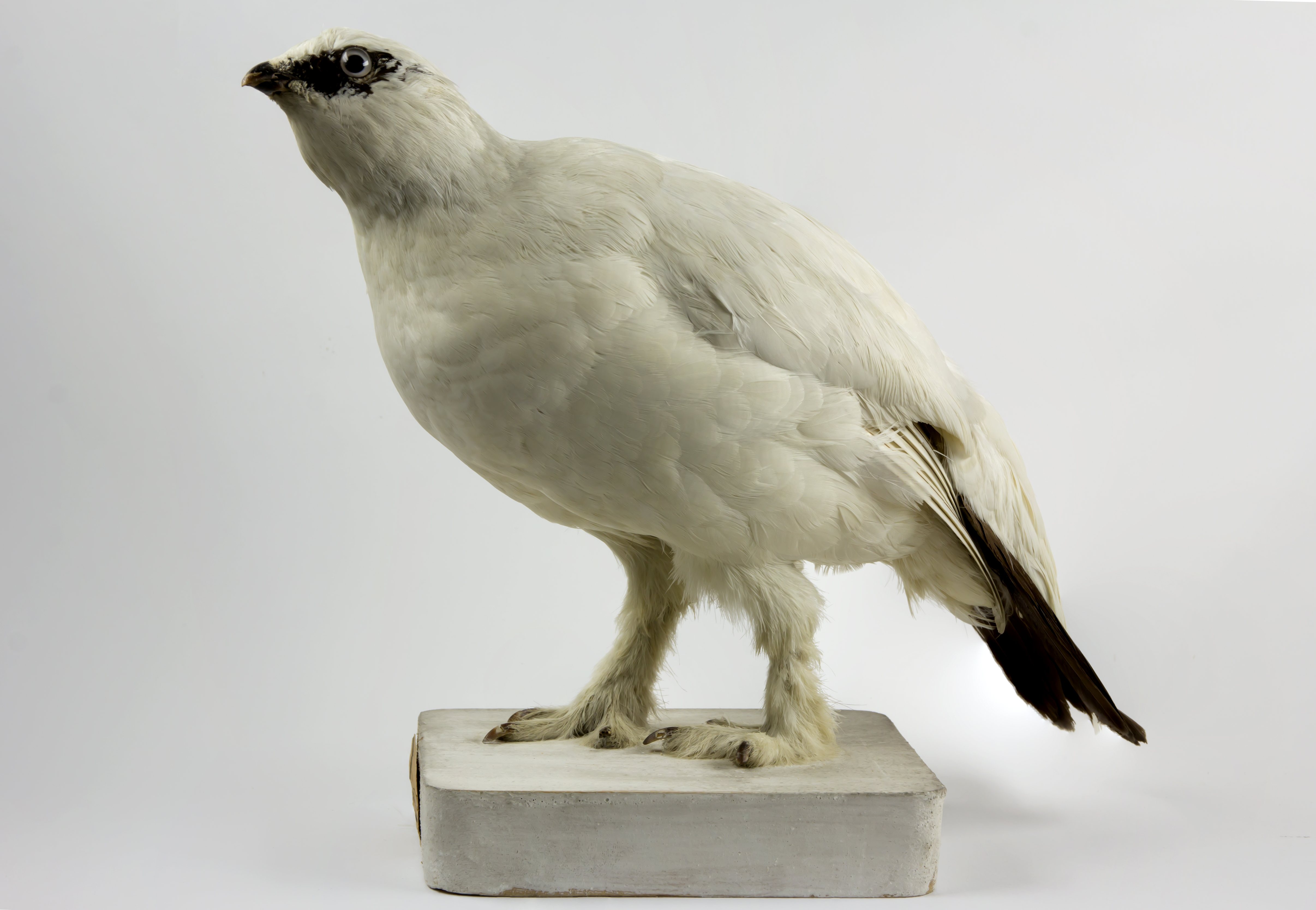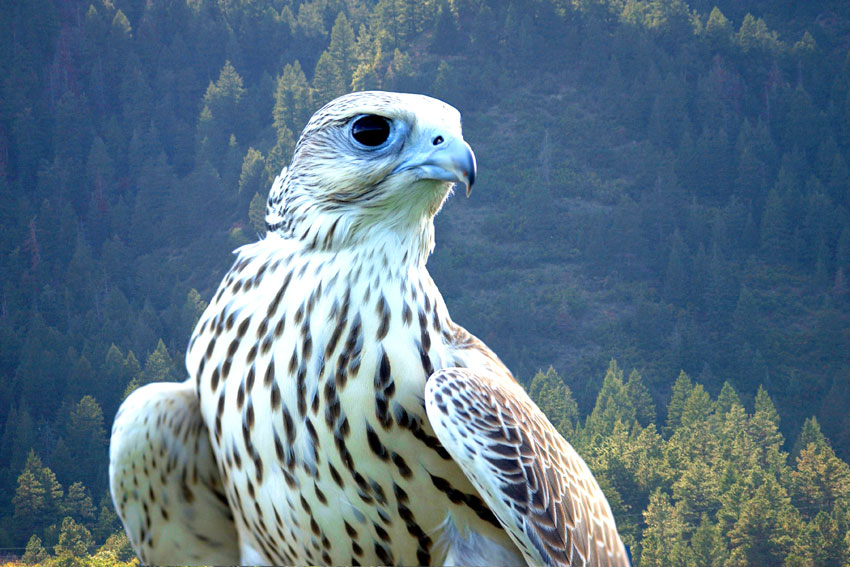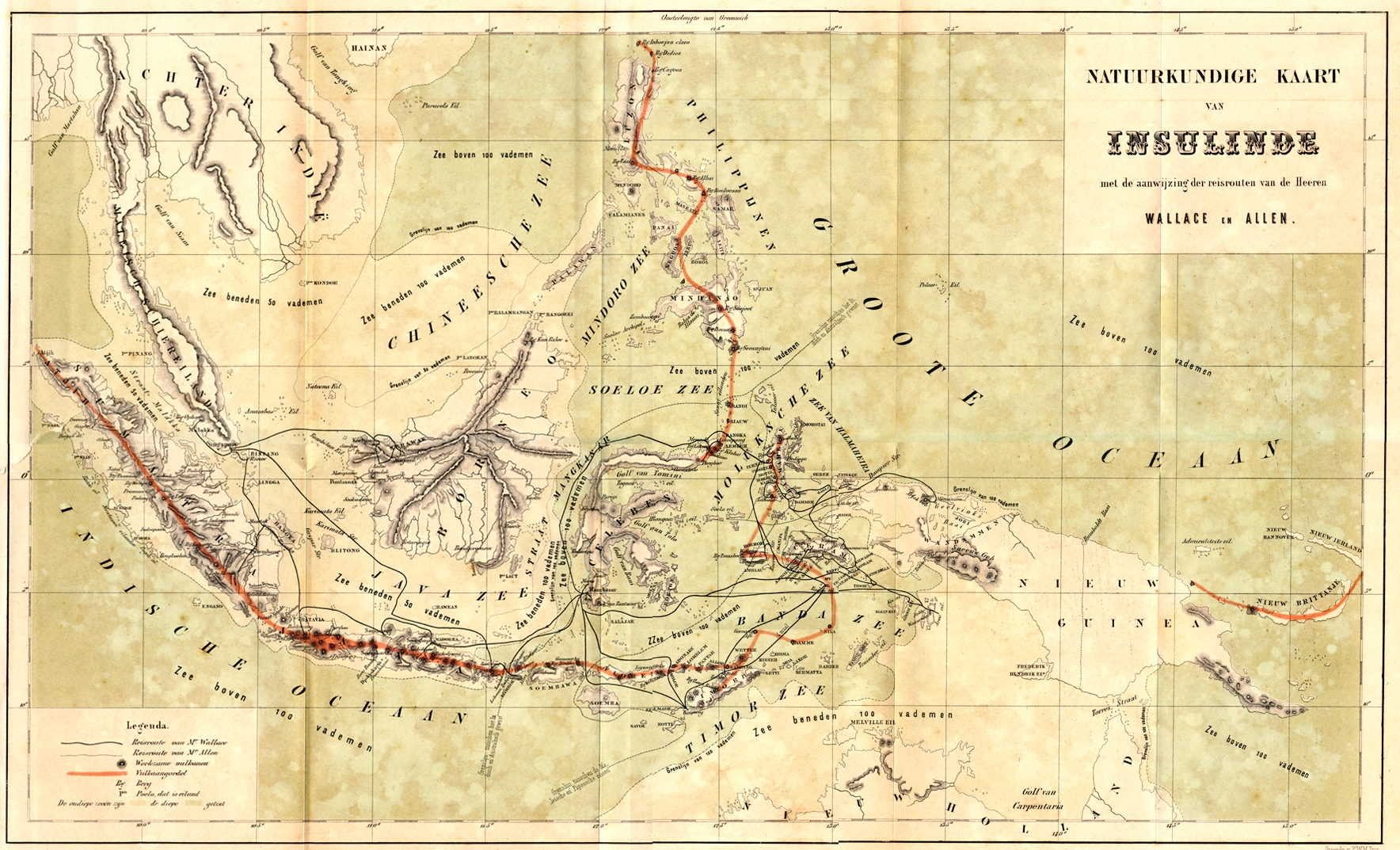|
Snow Camouflage
Snow camouflage is the use of a coloration or pattern for effective camouflage in winter, often combined with a different summer camouflage. Summer patterns are typically disruptively patterned combinations of shades of browns and greys, up to black, while winter patterns are dominated by white to match snowy landscapes. Among animals, variable snow camouflage is a type of seasonal polyphenism with a distinct winter plumage or pelage. It is found in birds such as the rock ptarmigan, lagomorphs such as the Arctic hare, mustelids such as the stoat, and one canid, the Arctic fox. Since these have evolved separately, the similar appearance is due to convergent evolution. This was used as Coloration evidence for natural selection, early evidence for natural selection. Some high Arctic species like the snowy owl and polar bear however remain white all year round. In military usage, soldiers often either exchange their disruptively-patterned summer uniforms for thicker snow camouflage ... [...More Info...] [...Related Items...] OR: [Wikipedia] [Google] [Baidu] |
Rock Ptarmigan (Lagopus Muta)
The rock ptarmigan (''Lagopus muta'') is a medium-sized Galliformes, game bird in the grouse family (biology), family. It is known simply as the ptarmigan in Europe. It is the official bird for the Canadian territory of Nunavut, where it is known as the ''aqiggiq'' (ᐊᕿᒡᒋᖅ), and the official game bird for the province of Newfoundland and Labrador. In Japan, it is known as the ''raichō'' (雷鳥), which means "thunder bird". It is the official bird of Gifu Prefecture, Gifu, Nagano Prefecture, Nagano, and Toyama Prefecture, Toyama Prefectures and is a protected species nationwide. Unlike many arctic bird species, ptarmigan do not gain substantial mass to hibernate over winter. Etymology The ptarmigan's genus name, ''Lagopus'', is derived from Ancient Greek ''lagos'' (λαγώς ''lagṓs''), meaning "hare", + ''pous'' (πούς ''poús''), "foot", in reference to the bird's feathered legs. The species name, ''muta'', comes from Neo-Latin and means "mute", referring to th ... [...More Info...] [...Related Items...] OR: [Wikipedia] [Google] [Baidu] |
Polar Bear
The polar bear (''Ursus maritimus'') is a large bear native to the Arctic and nearby areas. It is closely related to the brown bear, and the two species can Hybrid (biology), interbreed. The polar bear is the largest extant species of bear and land carnivore, with adult males weighing . The species is sexually dimorphic, as adult females are much smaller. The polar bear is white- or yellowish-furred with black skin and a thick layer of fat. It is more slender than the brown bear, with a narrower skull, longer neck and lower shoulder hump. Its teeth are sharper and more adapted to cutting meat. The paws are large and allow the bear to walk on ice and paddle in the water. Polar bears are both terrestrial and Pagophily, pagophilic (ice-living) and are considered marine mammals because of their dependence on marine ecosystems. They prefer the annual sea ice but live on land when the ice melts in the summer. They are mostly carnivorous and specialized for preying on pinniped, se ... [...More Info...] [...Related Items...] OR: [Wikipedia] [Google] [Baidu] |
Eclipse Of Darwinism
Julian Huxley used the phrase "the eclipse of Darwinism" to describe the state of affairs prior to what he called the "modern synthesis". During the "eclipse", evolution was widely accepted in scientific circles but relatively few biologists believed that natural selection was its primary mechanism. Historians of science such as Peter J. Bowler have used the same phrase as a label for the period within the history of evolutionary thought from the 1880s to around 1920, when alternatives to natural selection were developed and explored—as many biologists considered natural selection to have been a wrong guess on Charles Darwin's part, or at least to be of relatively minor importance. Four major alternatives to natural selection were in play in the 19th century: * Theistic evolution, the belief that God directly guided evolution * Neo-Lamarckism, the idea that evolution was driven by the inheritance of characteristics acquired during the life of the organism * Orthogenesis, ... [...More Info...] [...Related Items...] OR: [Wikipedia] [Google] [Baidu] |
Gyr Falcon
The gyrfalcon ( or ) (), also abbreviated as gyr, is a bird of prey from the genus ''Falco'' (falcons and kestrels) and the largest species of the family Falconidae. A high-latitude species, the gyrfalcon breeds on the Arctic coasts and tundra, the islands of northern North America and the Eurosiberian region, where it is mainly a resident species. Some gyrfalcons disperse more widely after the breeding season or in winter, and individual vagrancy can take birds for long distances. Its plumage varies with location, with birds being coloured from all-white to dark brown. These colour variations are called morphs. Like other falcons, it shows sexual dimorphism, with the female much larger than the male. For centuries, the gyrfalcon has been valued as a hunting bird. Typical prey includes the ptarmigan and waterfowl, which it may attack in flight; and it also hunts fish and small mammals. Taxonomy and etymology The gyrfalcon was formally described by Swedish naturalist Carl Linn ... [...More Info...] [...Related Items...] OR: [Wikipedia] [Google] [Baidu] |
Darwinism (book)
''Darwinism: An Exposition of the Theory of Natural Selection with Some of Its Applications'' is an 1889 book on evolution by Alfred Russel Wallace, the co-discoverer of evolution by natural selection together with Charles Darwin. This was a book Wallace wrote as a defensive response to the scientific critics of natural selection. Of all Wallace's books, it is cited by scholarly publications the most. Synopsis In ''Darwinism'' fifteen chapters, Alfred Russel Wallace sets out his understanding of the theory of evolution by natural selection. He begins by defining "species", discussing creationism, opinion before Charles Darwin, and Darwin's theory. He then describes the Malthusian struggle for existence, given the ability of organisms to reproduce in a world of finite resources. He explains the importance of variability within species, giving examples. He describes variation in domesticated animals and cultivated plants, and the process of artificial selection by breeders. Wal ... [...More Info...] [...Related Items...] OR: [Wikipedia] [Google] [Baidu] |
Alfred Russel Wallace
Alfred Russel Wallace (8 January 1823 – 7 November 1913) was an English naturalist, explorer, geographer, anthropologist, biologist and illustrator. He independently conceived the theory of evolution through natural selection; his 1858 paper on the subject was published that year On the Tendency of Species to form Varieties; and on the Perpetuation of Varieties and Species by Natural Means of Selection, alongside extracts from Charles Darwin's earlier writings on the topic. It spurred Darwin to set aside the Natural Selection (manuscript), "big species book" he was drafting and to quickly write an Abstract (summary), abstract of it, which was published in 1859 as ''On the Origin of Species''. Wallace did extensive fieldwork, starting in the Amazon River basin. He then did fieldwork in the Malay Archipelago, where he identified the faunal divide now termed the Wallace Line, which separates the Indonesian archipelago into two distinct parts: a western portion in which the ani ... [...More Info...] [...Related Items...] OR: [Wikipedia] [Google] [Baidu] |
Camouflage
Camouflage is the use of any combination of materials, coloration, or illumination for concealment, either by making animals or objects hard to see, or by disguising them as something else. Examples include the leopard's spotted coat, the battledress of a modern soldier, and the leaf-mimic katydid's wings. A third approach, motion dazzle, confuses the observer with a conspicuous pattern, making the object visible but momentarily harder to locate. The majority of camouflage methods aim for crypsis, often through a general resemblance to the background, high contrast disruptive coloration, eliminating shadow, and countershading. In the open ocean, where there is no background, the principal methods of camouflage are transparency, silvering, and countershading, while the bioluminescence, ability to produce light is among other things used for counter-illumination on the undersides of cephalopods such as squid. Some animals, such as chameleons and octopuses, are capable of Active ... [...More Info...] [...Related Items...] OR: [Wikipedia] [Google] [Baidu] |
Peat
Peat is an accumulation of partially Decomposition, decayed vegetation or organic matter. It is unique to natural areas called peatlands, bogs, mires, Moorland, moors, or muskegs. ''Sphagnum'' moss, also called peat moss, is one of the most common components in peat, although many other plants can contribute. The biological features of sphagnum mosses act to create a habitat aiding peat formation, a phenomenon termed 'habitat manipulation'. Soils consisting primarily of peat are known as histosols. Peat forms in wetland conditions, where flooding or stagnant water obstructs the flow of oxygen from the atmosphere, slowing the rate of decomposition. Peat properties such as organic matter content and saturated hydraulic conductivity can exhibit high spatial heterogeneity. Peatlands, particularly bogs, are the primary source of peat; although less common, other wetlands, including fens, pocosins and peat swamp forests, also deposit peat. Landscapes covered in peat are home to sp ... [...More Info...] [...Related Items...] OR: [Wikipedia] [Google] [Baidu] |
Black Grouse
The black grouse (''Lyrurus tetrix''), also known as northern black grouse, Eurasian black grouse, blackgame or blackcock, is a large Aves, bird in the grouse family. It is a Bird migration, sedentary species, spanning across the Palearctic in moorland and steppe habitat when breeding, often near wooded areas. They will spend the winter perched in dense forests, feeding almost exclusively on the needles of conifers. The black grouse is one of two species of grouse in the genus ''Lyrurus'', the other being the lesser-known Caucasian grouse. The female is greyish-brown and has a cackling or warbling call. She takes all responsibility for nesting and caring for the chicks, as typical with most Galliformes, galliforms. The black grouse's genome was sequenced in 2014. Taxonomy and naming The black grouse was Species description, formally described by the Swedish naturalist Carl Linnaeus in 1758 in the 10th edition of Systema Naturae, tenth edition of his ''Systema Naturae'' under th ... [...More Info...] [...Related Items...] OR: [Wikipedia] [Google] [Baidu] |
Calluna Vulgaris
''Calluna vulgaris'', common heather, ling, or simply heather, is the sole species in the genus ''Calluna'' in the flowering plant family Ericaceae. It is a low-growing evergreen shrub growing to tall, or rarely to and taller, and is found widely in Europe and Asia Minor on acidic soils in open sunny situations and in moderate shade. It is the dominant plant in most heathland and moorland in Europe, and in some bog vegetation and acidic pine and oak woodland. It is tolerant of grazing and regenerates following occasional burning, and is often managed in nature reserves and grouse moors by sheep or cattle grazing, and also by light burning. Description ''Calluna'' can reach in height. It has small-scale leaves (less than 2–3 mm long) borne in opposite and decussate pairs, whereas those of '' Erica'' are generally larger and in whorls of 3–4, sometimes 5. Clive Stace, (2010) ''New Flora of the British Isles'', 3rd edition. Cambridge University Press. It flowers from ... [...More Info...] [...Related Items...] OR: [Wikipedia] [Google] [Baidu] |
Red Grouse
The red grouse (''Lagopus scotica'') is a medium-sized bird of the grouse family which is found in Calluna, heather moorland in Great Britain and Ireland. It was formerly classified as a subspecies of the willow ptarmigan (''Lagopus lagopus'') but is now considered to be a separate species. It is also known as the moorcock, moorfowl or moorbird. ''Lagopus'' is derived from Ancient Greek (), meaning "hare", + (), "foot", in reference to the feathered feet and toes typical of this cold-adapted genus, and ''scotica'' means "of Scotland". The red grouse is the logo of The Famous Grouse whisky and an animated bird is a character in a series of its advertisements. The red grouse is also the emblem of the journal ''British Birds (magazine), British Birds''. Description The red grouse is distinguished from the willow ptarmigan and rock ptarmigan by its reddish brown plumage, rather than the white winter plumage. The tail is black and the legs are white. There are white stripes on t ... [...More Info...] [...Related Items...] OR: [Wikipedia] [Google] [Baidu] |
Origin Of Species
''On the Origin of Species'' (or, more completely, ''On the Origin of Species by Means of Natural Selection, or the Preservation of Favoured Races in the Struggle for Life'')The book's full original title was ''On the Origin of Species by Means of Natural Selection, or the Preservation of Favoured Races in the Struggle for Life''. In the 1872 sixth edition, "On" was omitted, so the full title is ''The origin of species by means of natural selection, or the preservation of favoured races in the struggle for life.'' This edition is usually known as ''The Origin of Species.'' The 6th is Darwin's final edition; there were minor modifications in the text of certain subsequent issues. See Freeman, R. B. In Van Wyhe, John, ed. ''Darwin Online: On the Origin of Species'', 2002. is a work of scientific literature by Charles Darwin that is considered to be the foundation of evolutionary biology. It was published on 24 November 1859. Darwin's book introduced the scientific theory that p ... [...More Info...] [...Related Items...] OR: [Wikipedia] [Google] [Baidu] |








